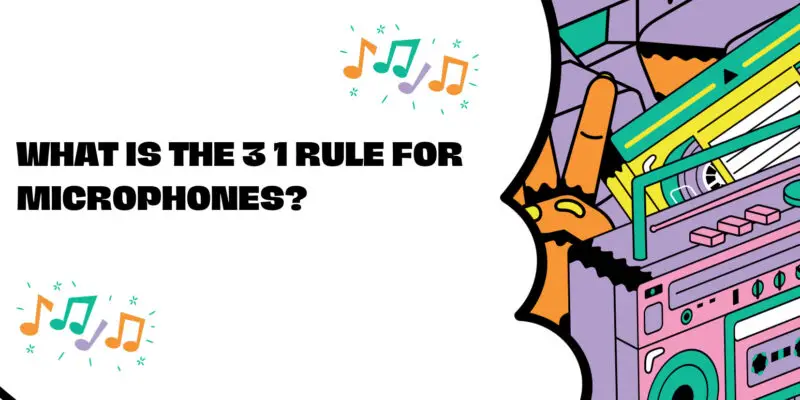In the world of audio recording, achieving the best sound quality often involves careful consideration of microphone placement and spacing. The 3:1 rule is a fundamental guideline used by audio engineers and recording professionals to ensure the optimal distance between microphones, particularly when recording multiple sound sources simultaneously. In this article, we’ll delve into what the 3:1 rule for microphones entails, how it works, and why it’s essential for capturing clear and pristine audio recordings.
Understanding the 3:1 Rule
The 3:1 rule is a simple yet effective principle that helps prevent phase cancellation and interference when using multiple microphones to capture sound sources. The rule states that microphones should be spaced at least three times the distance from each sound source to minimize the potential for phase-related issues.
To apply the 3:1 rule effectively, follow these steps:
- Measure the Distance: Determine the distance between each microphone and its respective sound source. This distance is critical for calculating the minimum spacing required to avoid phase problems.
- Apply the Rule: Ensure that the distance between any two microphones is at least three times greater than the distance from each microphone to its sound source.
Why the 3:1 Rule Matters
The 3:1 rule serves several essential purposes in audio recording:
- Preventing Phase Cancellation: When two microphones are placed too closely together and capture the same sound source, the audio signals they produce can interfere with each other, leading to phase cancellation. This phenomenon results in a loss of clarity and sonic artifacts in the recorded audio.
- Minimizing Interference: Spacing microphones according to the 3:1 rule reduces the potential for interference between microphones. It ensures that each microphone captures a unique, uncontaminated sound source, preserving the audio’s integrity.
- Enhancing Sound Quality: By avoiding phase-related issues and interference, the 3:1 rule helps maintain the highest sound quality in multi-microphone setups. This is crucial in professional audio recording, live sound reinforcement, and broadcasting.
Applications of the 3:1 Rule
The 3:1 rule is particularly valuable in various recording scenarios:
- Studio Recording: When recording multiple instruments or vocalists in a studio, adhering to the 3:1 rule ensures that each microphone captures the intended source without unwanted bleed from nearby sound sources.
- Live Sound Reinforcement: In live music performances and events, such as concerts or conferences, proper microphone spacing helps minimize feedback and ensures that each microphone picks up its designated source cleanly.
- Broadcasting: Television and radio broadcasts rely on clear and interference-free audio. The 3:1 rule plays a crucial role in maintaining high-quality sound in these settings.
- Podcasting: Podcasters often use multiple microphones when recording interviews or panel discussions. Adhering to the 3:1 rule helps maintain audio clarity and professionalism in podcast recordings.
Conclusion
The 3:1 rule for microphones is a valuable guideline for anyone involved in audio recording and sound reinforcement. By following this rule and spacing microphones appropriately, you can avoid phase-related problems, interference, and audio artifacts, ultimately achieving optimal sound quality in your recordings. Whether you’re recording in a studio, managing live sound, or hosting a podcast, understanding and applying the 3:1 rule is essential for capturing pristine and professional audio.


